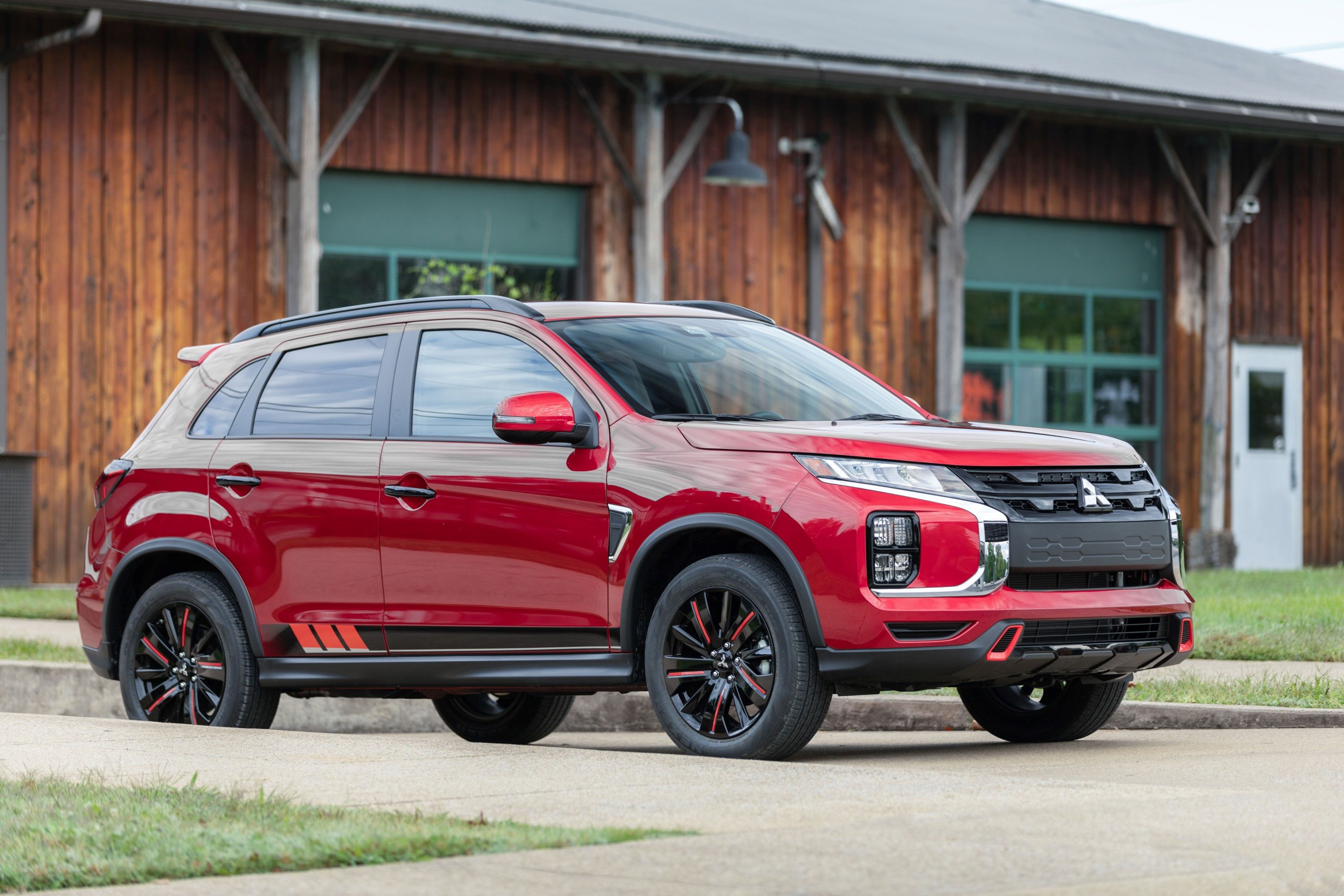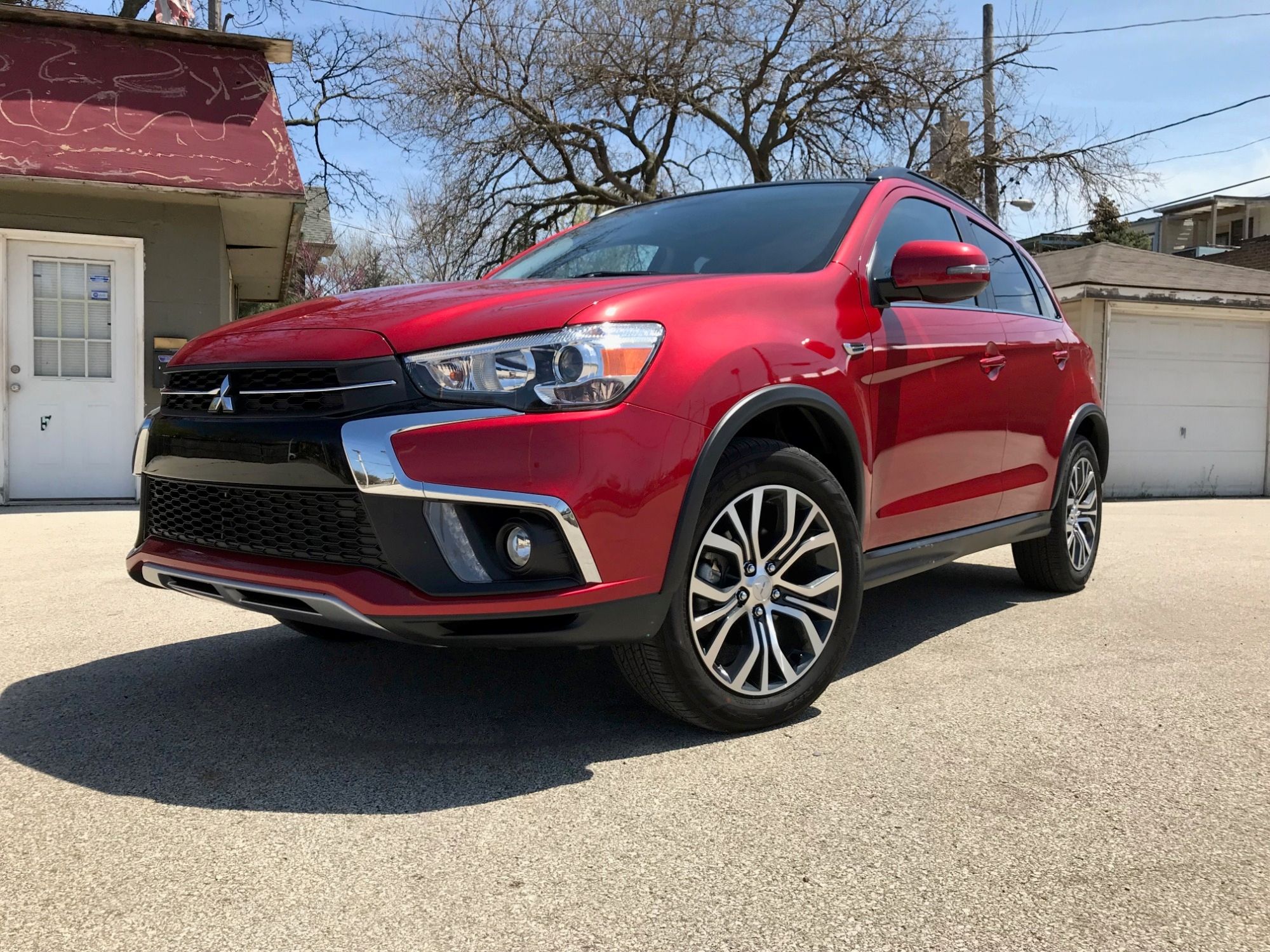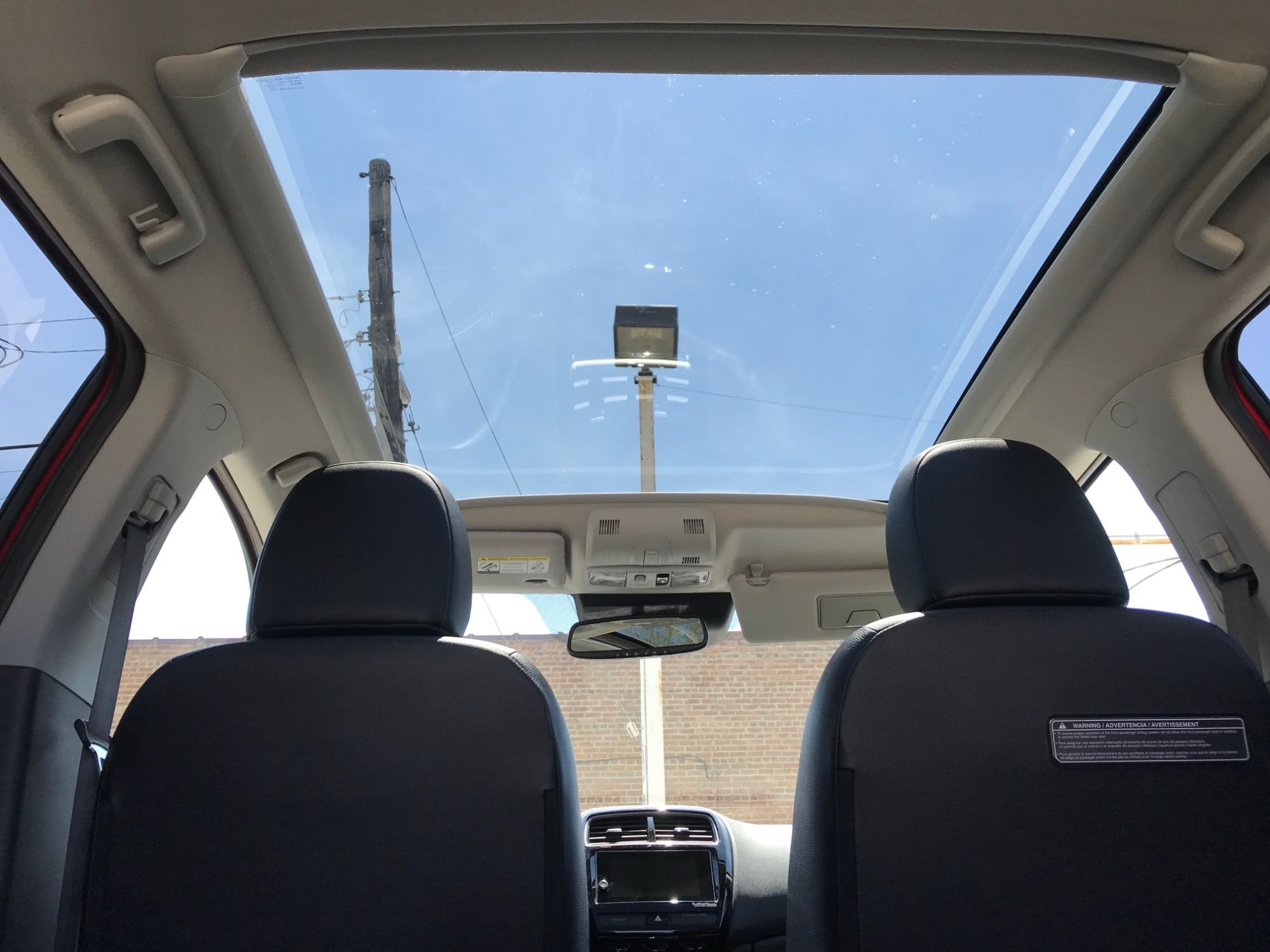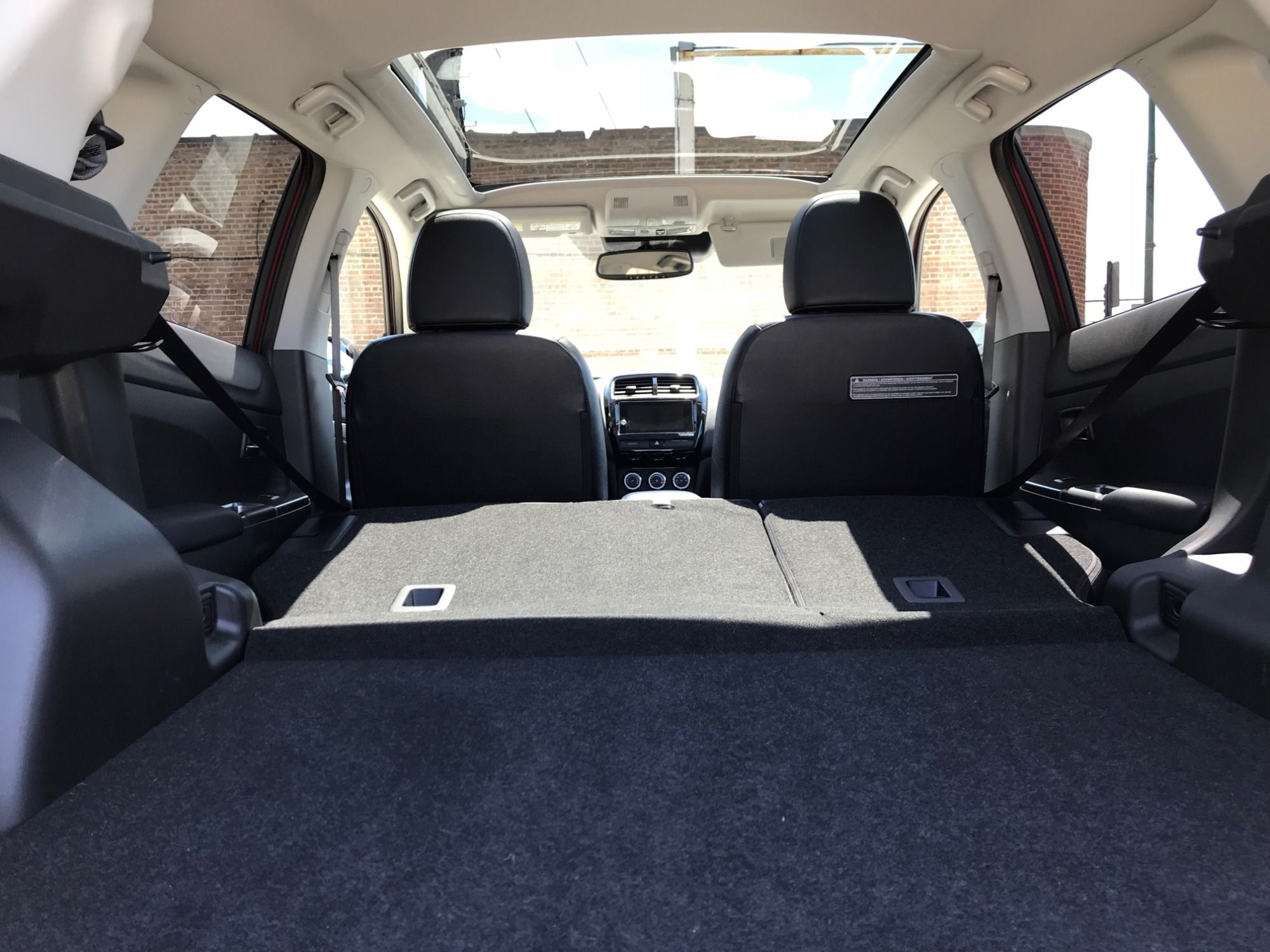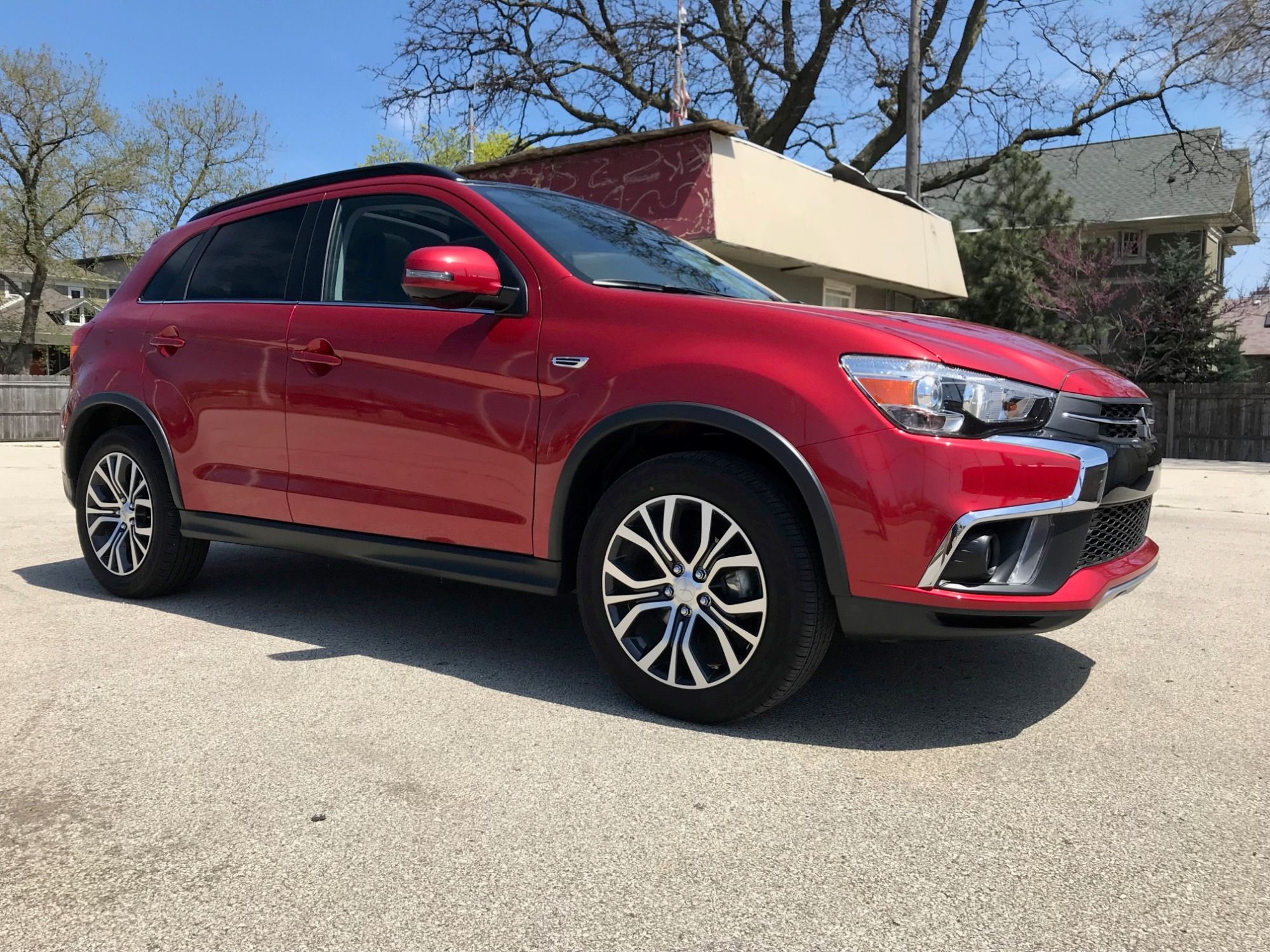2017 Mitsubishi Outlander Sport Test Drive Review: Looks Can Be Deceptive
It should come as a shock to nobody that the Outlander Sport made up a third of Mitsubishi's overall sales in 2017. For one, consumers love small crossovers. Secondly, Mitsubishi's lineup really only consists of three cars: the Mirage, Lancer and the three variations of the Outlander (Sport, regular and the PHEV we recently reviewed). Still, 33,160 Outlander Sports sold is nothing to sneeze at, even if it is well off the pace of the segment's leaders, the Kia Soul, Jeep Renegade and Subaru Crosstrek, all of which sold over 100,000 units last year.
The Outlander Sport will most likely never do anything close to 100,000 sales per year, but it's still managed to carve out a niche for itself. What that niche is based on is kind of hard to tell. With a base MSRP of $20,395, the Outlander Sport is more expensive than both the Soul and Renegade and only slightly cheaper than the Crosstrek, which comes standard with all-wheel drive. While it is roomy, it's not exactly the king of cargo or legroom. And, spoiler alert, it's not all that fun to drive. So, what makes the Outlander Sport so appealing-ish to consumers? We hopped behind the wheel of one for a week to try and find out.
Now, first off, the tester we were provided with was a far cry from the bargain basement base model that rings in at under $21,000. Our Outlander Sport was the top-tier SEL 2.4 AWC trim. For $25,995 you get a 2.4-liter four-cylinder engine good for 168 horsepower and 167 lb-ft of torque, which is mated to a CVT. All-wheel drive is standard on this trim, with regular Outlander Sport's featuring front-wheel drive. Standard features here include 18-inch alloy wheels, LED running lights, rain-sensing windshield wipers, power folding side mirrors, heated front leather seats, a 7.0-inch infotainment touchscreen and Apple CarPlay and Android Auto.
Our tester also had the one and only option package available, the $2,000 Touring Package, which added forward collision mitigation, lane departure warning, automatic high beams, a nine-speaker Rocker Fosgate sound system and a panoramic glass roof. All told, the Outlander Sport we tested rang in at $29,110. At that price point the Outlander Sport's faults became hard to ignore. We'll start with the engine, which, at least on paper, looks to be plenty capable. Now the 2.4-liter mill is certainly the one to go with. But being better by comparison to the base engine, a 2.0-liter four-cylinder good for 148 ponies, doesn't exactly mean much.
The automaker hasn't released official figures, but most outlets peg the Outlander Sport's 0-60 mph time at about 8.5 seconds. That's not bad for the segment, but once you hit the highway the CUV begins to lose steam. Switch to manual mode and downshift if you want, but the result will stay the same. Heck, go ahead and engage "Sport" mode and see if that helps matters. Outside of city driving and quick lane changes, Sport mode isn't useful for all that much. In fact, it might be best to avoid it altogether as the CVT's drone becomes impossible to ignore.
Seriously, nothing reminds you more that the Outlander Sport is made by an automaker is dire(ish) straits than hammering the gas and feeling like you've instantly been transported to the window seat in an airplane about to take off. The suspension feels like it was designed for a rental car, with bumps in the road effortlessly transmitted throughout the cabin, and the steering feels overly numb for a car whose name contains the word "Sport" in it. That said, the brake feel was firm and the Outlander Sport is pretty nimble when it comes to navigating crowded city streets. The EPA estimates fuel economy at 23/28/25 mpg (city, highway, combined).
We recorded an average of 25 mpg, with the majority of our driving done on the highway. Matching the disappointing driving experience is the interior, which is filled with bargain materials. The majority of the buttons look like they belong on a Fisher-Price toy, with our favorite being the giant "Info" button that sits right behind the turn signal stalk. The HVAC controls also felt flimsy, although their basic design was charming in that you didn't need to bust out the owner's manual in order to figure out how to operate the air conditioning. If anything, the Outlander Sport's interior can best be described as functional. While the materials aren't top quality, everything works as it should with no explanation needed.
The panoramic glass roof is capable of making you forget where you are every so often. The infotainment screen is basic with regards to its functions but does work quickly. If you want a slicker experience you can always go the Android Auto or Apple CarPlay route. The eight-way power adjustable driver's seat was comfortable enough, although finding the optimal driving position wasn't easy. The Outlander Sport offers 36.3 inches of rear legroom and 36.8 inches of rear headroom (the panoramic glass roof eats up about an inch of space). Those figures translate to two full-sized adults fitting comfortably, although there is technically space for three. In terms of cargo space, the Outlander Sport offers 20.1 cubic feet of storage space with the rear seats up.
Fun fact: Without the premium audio system, which has its subwoofer in the cargo hold, max storage space is 21.7 cubic feet. The rear seats are easy to fold and lie flat. With them down, total cargo capacity is 49.5 cubic feet. The Outlander Sport offers comparable cargo space when compared to the Jeep Renegade (18.5/50.8 cubic feet) and absolutely blows the Toyota C-HR (19/36.4 cubic feet) out of the water. However, it can't hold a candle to the Kia Soul (21.3/61.3 cubic feet), Honda HR-V equipped with all-wheel drive (23.2/57.6 cubic feet) or Subaru Crosstrek (20.8/55.3 cubic feet). Being middle of the pack in storage space is a fair price to pay for the Outlander Sport's slick and eye-catching exterior design.
Yes, we're a fan of the way this thing looks. Those LED running lights are new, and the grille design has been tweaked slightly. Oh, and Mitsubishi also added a rear diffuser because why the hell not. The word "sporty" has lost basically all meaning in the automotive world, but it's the best term we can think of to describe the Outlander Sport. Even if you disagree with that characterization, you've got to give Mitsubishi points for not trying to play it too safe. Remember, this was the segment the Nissan Juke helped make a hit. Nowadays it's characterized by boxy designs and conservative styling that lacks any sort of emotion or character.
After a week with the 2018 Mitsubishi Outlander Sport, it's hard to say why 33,160 people drove one off a dealer's lot in 2017. Other than a unique design, there's not really much going on here. But perhaps that's enough in the subcompact crossover segment. After all, no one is looking to any of these cars to do all that much. That's not to say automakers don't try. Kia put a seven-speed dual-clutch and a turbocharged engine making 201 hp into the Soul, and the Jeep Renegade has proven that it can actually hold its own when you take it off road. But at the end of the day, do people who buy these cars even care just how capable they are? Our guess would be no, and that's perhaps the best thing the Outlander Sport has going in its favor.

